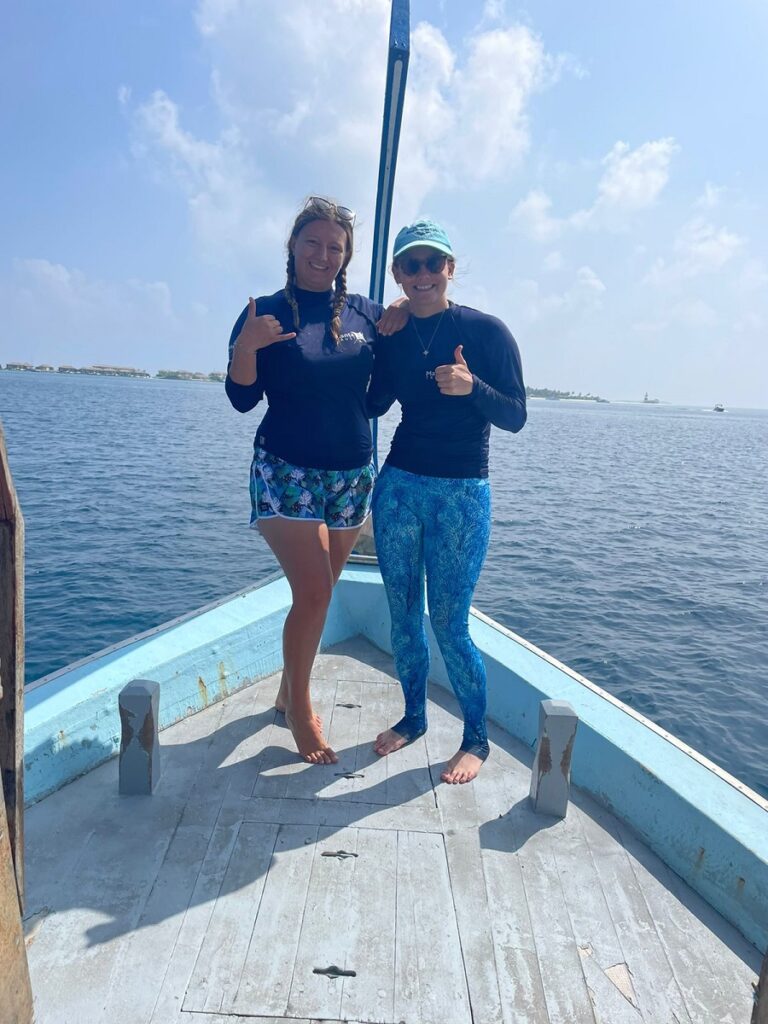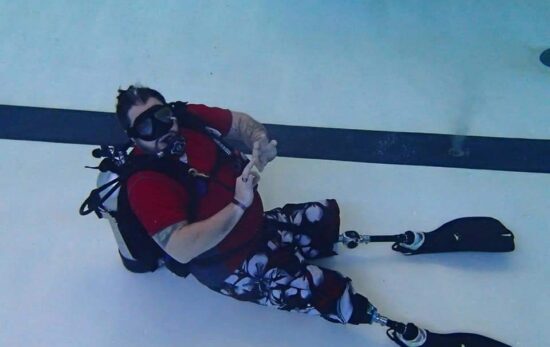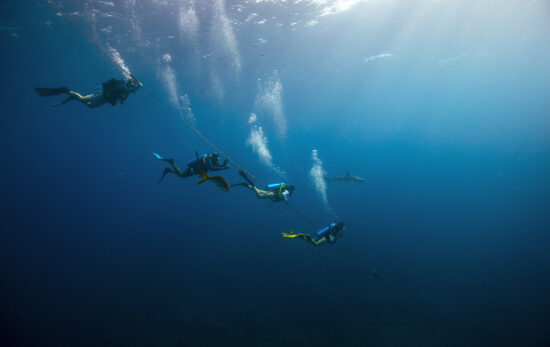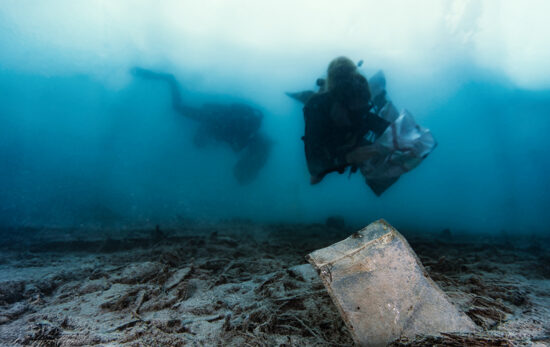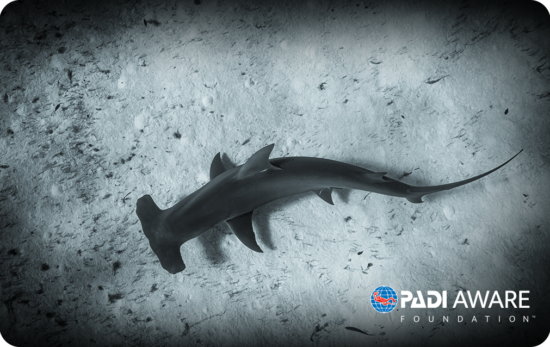Meet Anna Knochel — better also known as ‘MantannaRay’ on Instagram. And for good reason: the ecologist and self-proclaimed ‘manta ray fanatic’ is studying these majestic animals in the Maldives. This is a mecca for mantas.
“I love everything about manta rays!” she says. “They are inquisitive creatures that can have cheeky personalities. Watching them move through the water at a cleaning station or while feeding on the surface is magical.”
Currently, Knochel is in the water on Raa Atoll studying reef manta rays as part of the Maldivian Manta Ray Project. Often, at this research site, she and her team see the same individual animals daily over their three-month peak season. Follow her on Instagram for daily updates from the field.
“It is quite fun to learn more about their behaviors, movement patterns and personal characteristics,” she adds.
The project is part of the world-renowned Manta Trust, which works to turn the tide for manta and devil rays through research, education and collaboration.
How Many Mantas Live in the Maldives?
“The Maldives boasts the largest known population of reef manta rays (Mobula alfredi) in the world,” Knochel shares with PADI.
Just how many manta rays are there? The Manta Trust estimates that the local population could be between 5-6,000 individuals at any one time. According to the Save Our Seas Foundation, which also does work with Maldivian mantas, the local population could exceed 10,000 individuals. Either way, as they note, that’s a ‘massive’ amount for this small country in the middle of the Indian Ocean.
Over the last 15 years, the Maldivian Manta Ray Project has identified over 5,000 individual manta rays in their comprehensive database, Knochel says. Researchers use photo-identification to distinguish between different mantas, based on the spot patterns on their bellies. In this way, scientists and conservationists can track mantas over time to learn important life history and migration information.
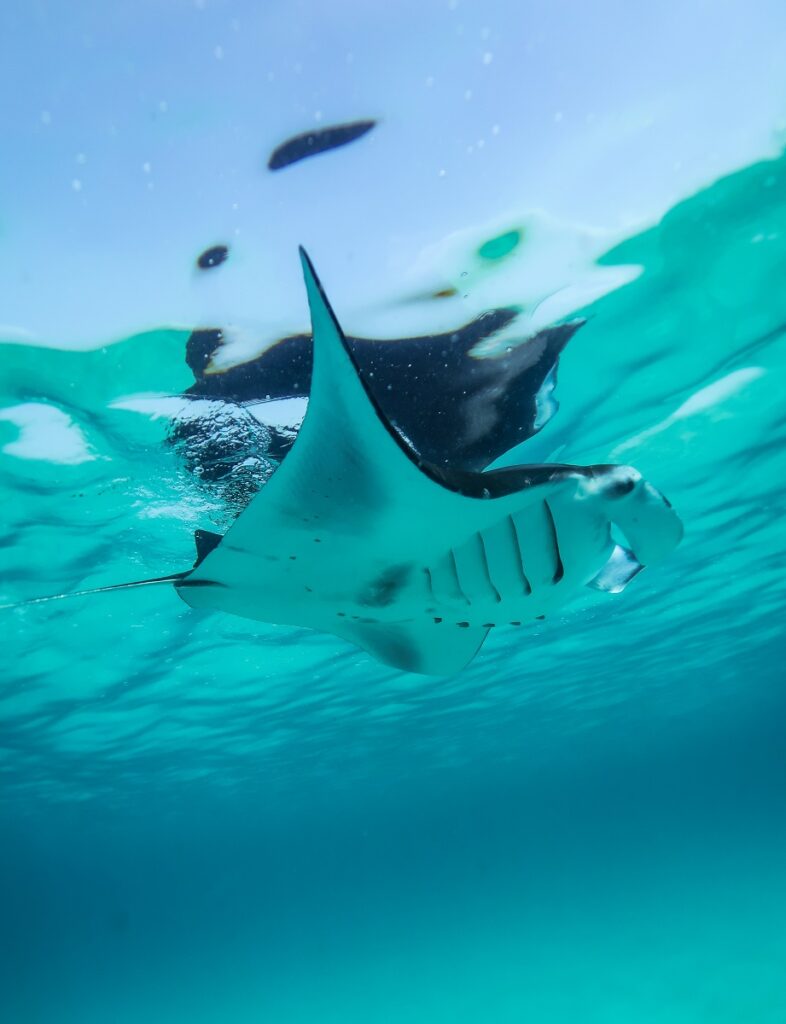
This manta ray is a juvenile female named Lulu and is sighted daily to weekly in Maamunagau Lagoon in Raa Atoll. Anna Knochel 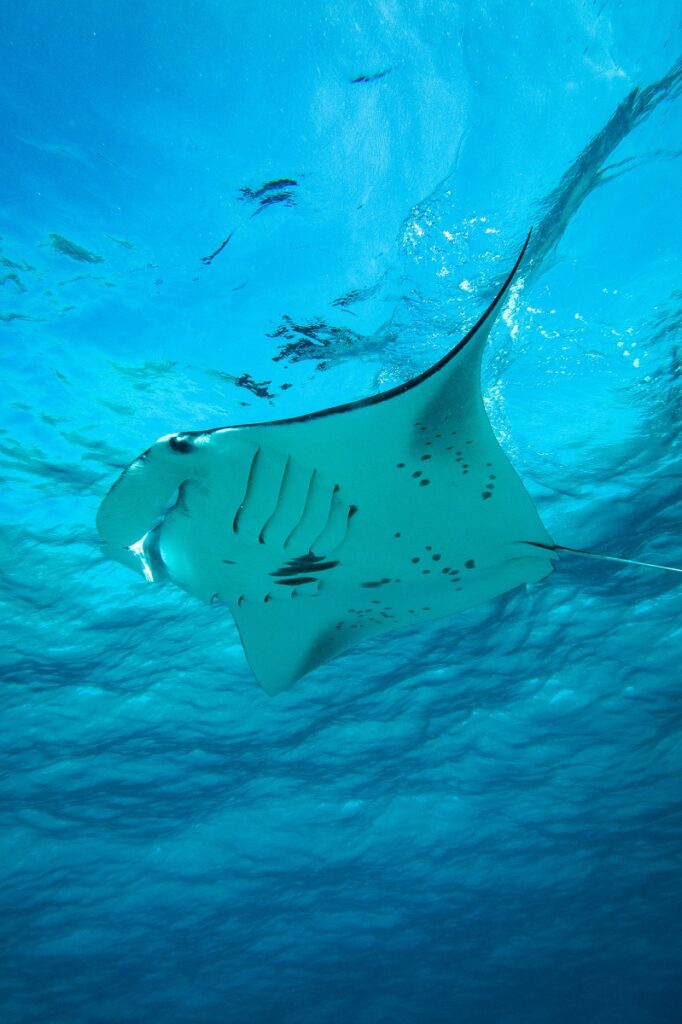
This manta ray is a juvenile female named Errigal and is sighted daily to weekly in Maamunagau Lagoon in Raa Atoll. It is identified by its belly spots. Anna Knochel
Why Are There So Many Maldivian Mantas?
The waters around the Maldives are nutrient-rich and full of plankton. These tiny creatures are the base of the marine food chain. They also happen to be manta rays’ and whale sharks’ favorite food.
According to Save Our Seas, it’s not uncommon to find more than 150 manta rays feeding at the surface right next to a half-dozen whale sharks. Talk about a once-in-a-lifetime dive!

Where Can You Find Mantas in the Maldives?
“They can be seen at nearly every atoll,” Knochel says.
In fact, the reef manta rays that Knochel studies are ‘resident’ in the Maldives. Therefore, scuba divers and researchers can find manta rays year-round in the islands.
Monsoons and seasonal shifts in plankton do affect where mantas are at any given time in the Maldives. Local dive operators will be able to help you safely and responsibly find mantas.
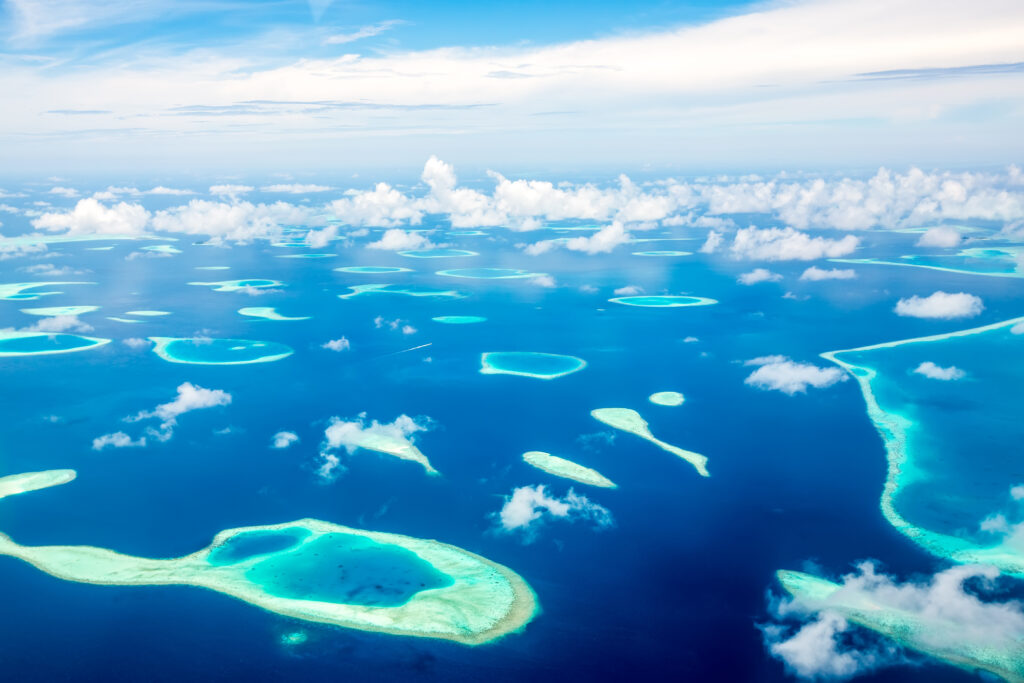
What About Cleaning Stations?
Cleaning stations are also a reliable place to see manta rays in the Maldives while scuba diving, Knochel tells us. Around the world, mantas and other big animals like sharks and sea turtles use oceanic cleaning stations. When they come to these specific spots, cleaner fish do what they do best. The tiny wrasses and shrimp remove dead skin and parasites from the bodies of these bigger fish and animals.
Scientists also think that cleaning stations provide important courtship and socialization opportunities for mantas.
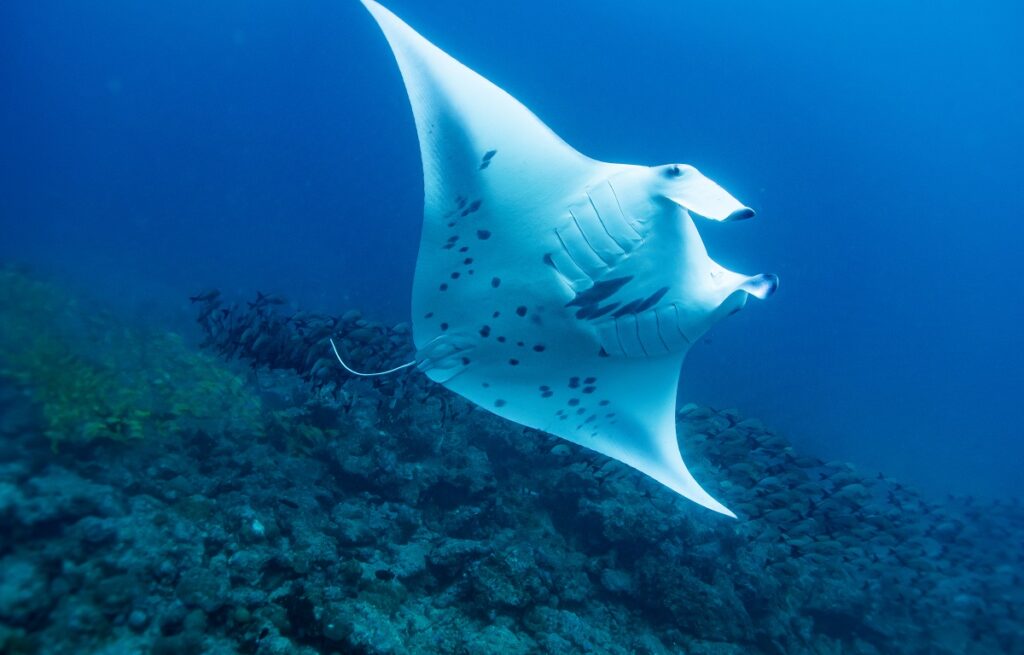
The Biggest Threats to Manta Rays
Manta rays do have natural predators such as sharks. Additionally, they are susceptible to human-caused harm. This includes pressures from tourism, like being hit by speedboats. Irresponsible divers and snorkelers sometimes harass mantas at cleaning stations and at feeding sites, Knochel says. Mantas also often get entangled in ghost nets or mooring lines.
“Worryingly,” she adds, “incidental bycatch by fishing fleets on the high seas is all too common and has resulted in decreasing population trends for all manta and devil ray species.”
Thus, in 2020, the oceanic manta ray was put on the IUCN endangered species list. This reflects continuing population declines, Knochel says.
Moreover, in some countries, people intentionally catch manta and devil ray species for their gill plates. These are used as a kind of healing medicine despite no scientific backing to support these claims, the researcher says.
Finally, the climate crisis is also a serious concern. This is because we will likely lose coral reefs to coral bleaching due to rising sea temperatures, Knochel says.
Manta rays use coral reefs for cleaning stations, so losing them could affect the rays’ survival. Scientists also predict that zooplankton abundance will decrease and shift as ocean temperatures increase.
“How this will impact manta rays in the long run is, however, still uncertain,” Knochel says.

How Can We Help?
Knochel ends with some tips for manta ray conservation:
- First read the Manta Trust’s 10-step guide and multi-lingual toolkit to swimming with manta rays. This is based on years of studies on sustainable human-manta interactions.
- Then, if you want to swim with manta rays, find an operator that promotes the ‘code of conduct‘ for manta interactions and responsible tourism.
- You could also join a citizen-science diving expedition with the Manta Trust.
- Moreover, if you encounter a manta ray anywhere in the world, try to get a photo of its belly. Send the picture and information from your sighting to IDTheManta with the Manta Trust. This expands the global database. Plus, if you find a new manta, you might even get to name it!
- Also, if you choose to eat ocean animals, know where your seafood comes from. Industrial fishing remains a huge threat to manta and devil ray species often caught as bycatch. Trawling and seine nets are the most harmful. Support sustainable fishing practices like pole and line, when possible.
- Lastly, raise awareness within your dive community about the plight of manta and devil ray species. Support organizations like The Manta Trust and PADI AWARE Foundation that fund research, conservation, and education initiatives.
